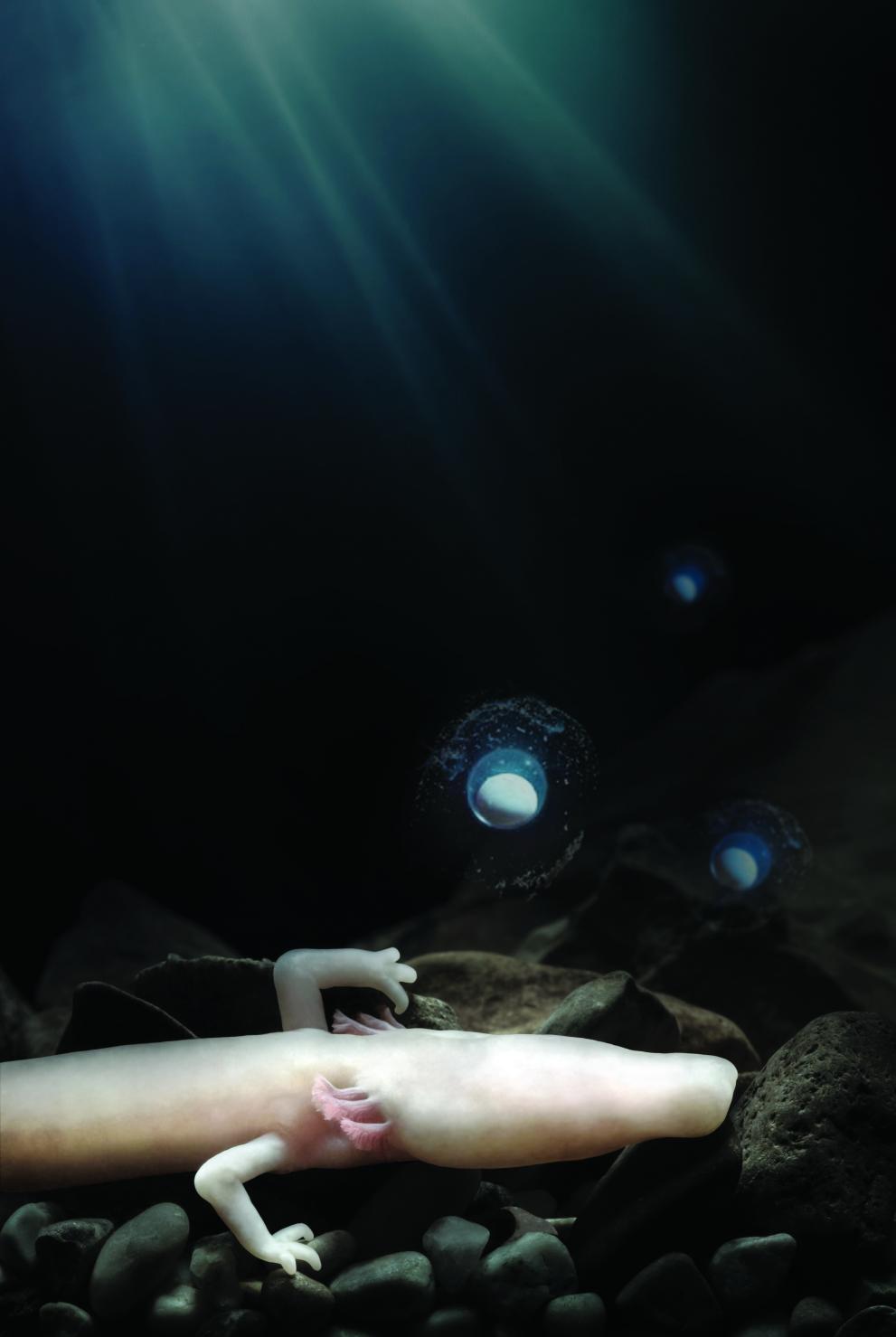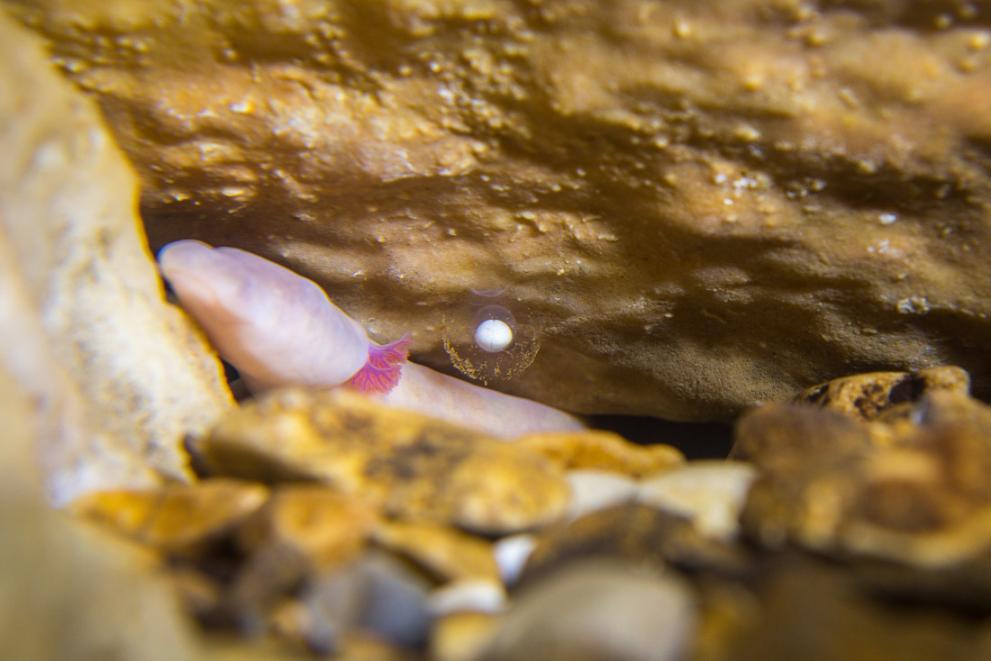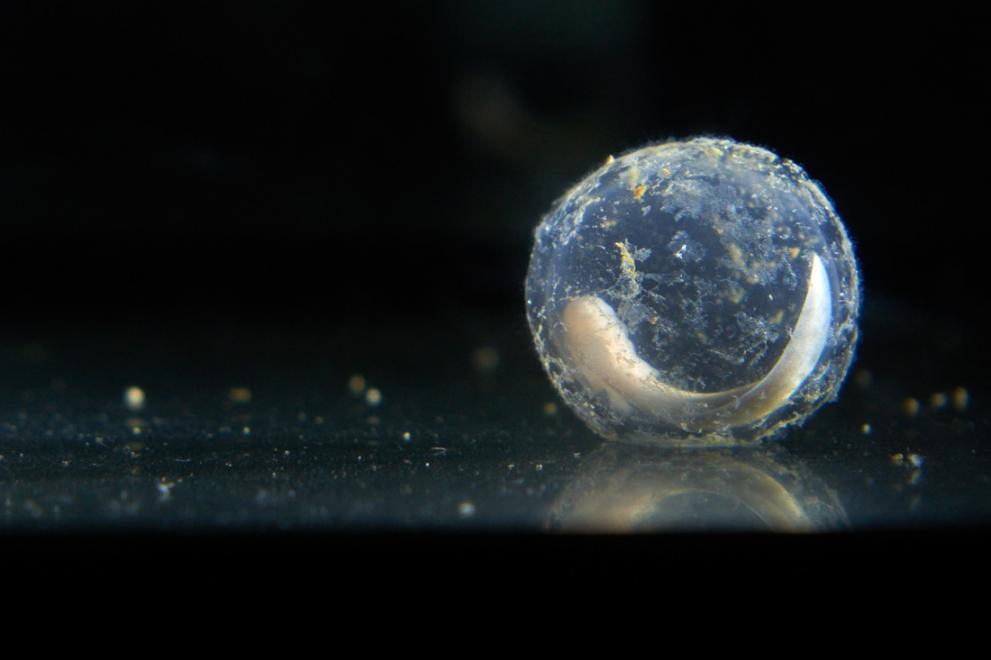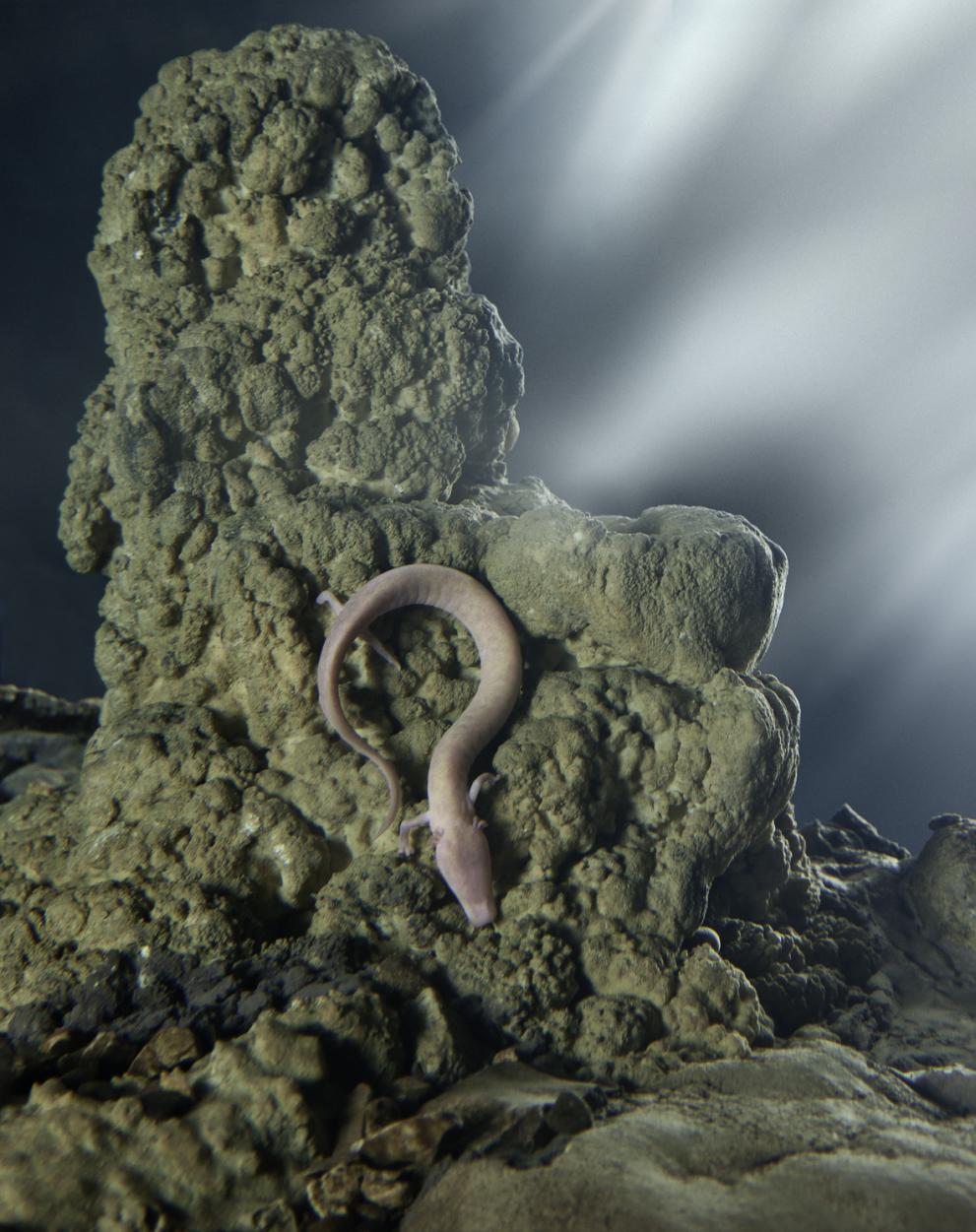
The olm is a unique, cave-dwelling amphibian found only in southern Europe. It used to be mistaken for a baby dragon because of its appearance. Today, it has been transformed into a charismatic species used to find political support for the protection of threatened habitats and species.
About the project
- Main applicant
Postojnska jama d.d.
- Category
Communication
- Countries involved
Slovenia
- Main N2000 site
Notranjski trikotnik (SI3000232)
The blind cave salamander, or olm (Proteus anguinus) – which was mistaken for baby dragons in the past because of its appearance – is an endangered species only found in the Dinarides region in southern Europe. Its conservation status is vulnerable in most habitats where it is present.
Postojna Cave Natura 2000 site is the most important Slovenian site for the olm. However, it is under threat from the infiltration of nutrients and pesticides from wastewater treatment and agriculture.
The Postojna Cave management company is committed to securing protection of the olm and its habitat. Activities at the cave visitor centre include educating schoolchildren and raising public awareness about the negative impacts of groundwater pollution.
This charismatic animal has also been used in a media campaign to promote better protection of the cave system. An exhibition aquarium, actually in the cave, provides optimal conditions for olm reproduction. In 2016, one of the olms started laying eggs, leading to the first successful breeding of the species in almost natural conditions. Thanks to the team’s intensive care of the embryos and young olms, 21 five-year-old “baby dragons” have been bred.
This significant event excited a lot of public media interest. The egg-laying and subsequent growth of the youngsters was covered in newspapers and broadcast internationally - no-one had seen this endemic species reproduce “in the wild” before.
Cooperation has also been built with zoologists at Ljubljana University who were able to study the olm reproductive process and learn about successful breeding conditions. In addition, dialogue with authorities and farmers has been promoted to reduce negative impacts on the cave system. This has led to a reduced use of fertilisers by local farmers and stricter monitoring of local sewage plants.
The activities are a good example of how a charismatic species can be used to find political support for the protection of threatened habitats and species.

Postojna Cave – Baby dragon guardians - video 1 
Postojna Cave – Baby dragon guardians - Photo 1Postojnska jama d.d 
Postojna Cave – Baby dragon guardians - Photo 2Postojnska jama d.d 
Postojna Cave – Baby dragon guardians - Photo 3Postojnska jama d.d 
Postojna Cave – Baby dragon guardians - Photo 4Alex Hyde 
Postojna Cave – Baby dragon guardians - Photo 5Dragan Arrigler
